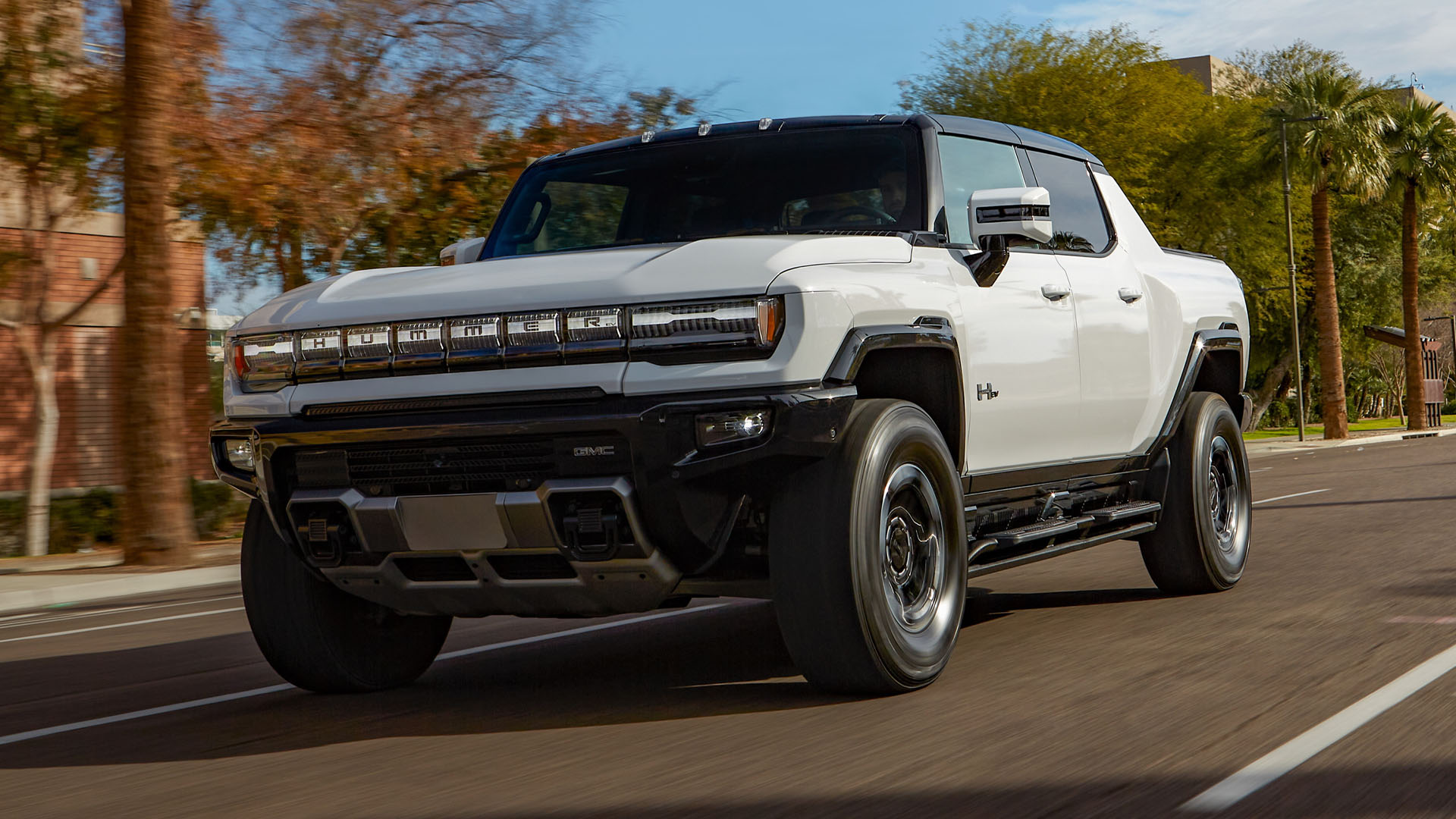

The GMC Hummer EV is one of the hottest electric vehicles on the market. In normal circumstances, demand for the truck would likely still far outpace supply; however, these are not normal circumstances. As the Wall Street Journal reports, due to supply constraints, General Motors is building around a dozen Hummer EVs a day. With a waitlist of 77,000 people, it would take the automaker approximately 17 years to satisfy demand at its current pace.
Speaking to the WSJ, a GM spokesperson says it will soon ramp up production as battery cell availability improves. So far, GM has been using outsourced LG battery cells in order to build its packs. When the automaker’s Ohio battery factory comes online later in the summer, it’s indicated that hundreds of deliveries should “grow to thousands” later in 2022.
The struggle to secure cells likely has a lot to do with the Hummer EV’s pack size of over 200 kilowatt-hours. Weighing in at just under 3,000 pounds by itself, the battery makes up a third of the truck’s weight and takes a tremendous amount of high-demand materials to assemble. Likewise, other supply constraints outside of cell sourcing are likely limiting production.
As Reuters reports, GM has nearly 100,000 vehicles sitting unfinished at a variety of facilities due to supply constraints. GM has not specifically stated whether or not these shortages are affecting the Hummer EV, but the vehicle does share drivetrain parts with other electric vehicles from the automaker, such as the Cadillac Lyriq.

Other automakers are facing similar woes when it comes to producing their own electric vehicles, like Rivian. Earlier this year, it was reported that the startup would build just 25,000 units in 2022, including 10,000 delivery vans Amazon reportedly expects by the end of the year. Additionally, Rivian has a little more than 55,000 orders for its R1T pickup and R1S SUV to plow through.
The supply chain issues do seem to be easing, however, as the GM spokesperson indicates. The first few quarters of this year have been less than ideal due to unforeseen circumstances, such as limitations on raw materials from Russia and Ukraine, but the infrastructure needed to support EV adoption, at least from a vehicle perspective, is finally catching up. Once all of these battery factories and supply chain connections are realized, we’ll finally get to see how strong the demand for EVs is with an abundance of supply.
Got a tip or question for the author? Contact them directly: peter@thedrive.com